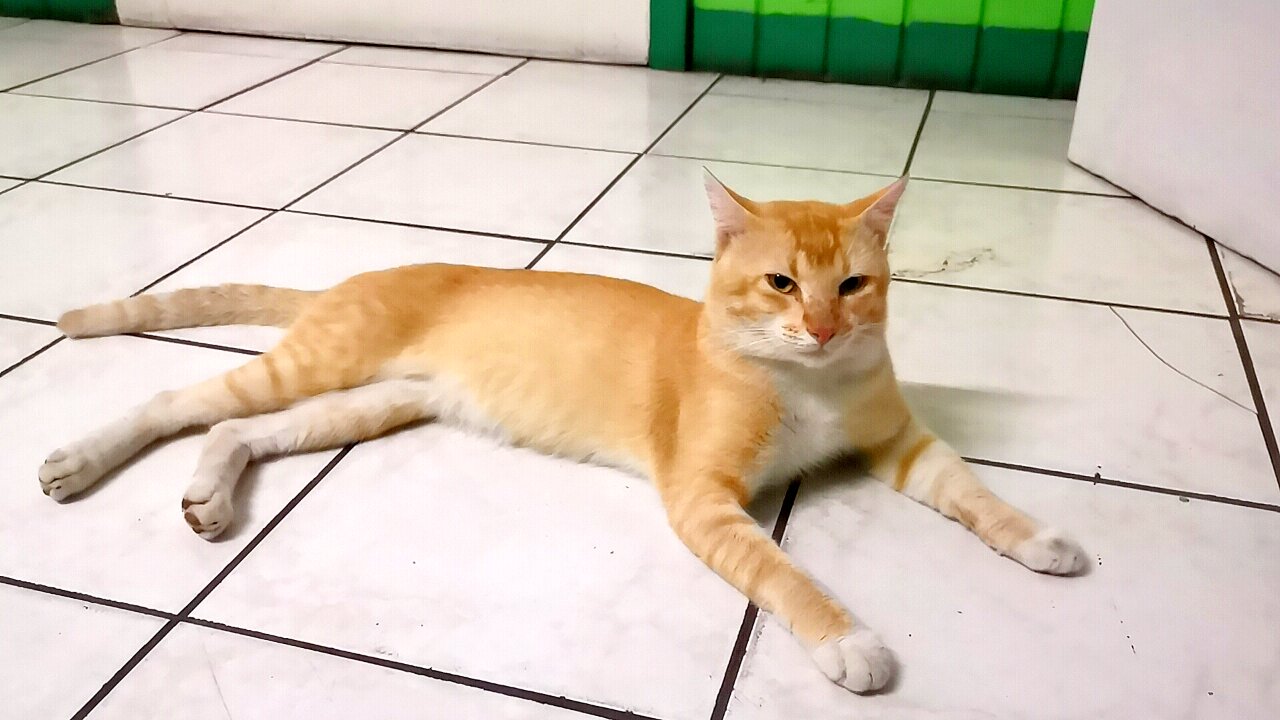Premium Only Content

The Physical Characteristics of Cats
There are many different breeds of cats, including Abyssinian, Himalayan, Maine Coon, Manx, Persian, Scottish Fold, and Siamese, to name a few. The Cat Fanciers’ Association, which is the world’s largest registry of pedigreed cats, recognizes about 40 distinct breeds. The most familiar cats are the domestic shorthair and the domestic longhair, which are really mixtures of different breeds. Cat breeds differ in looks, coat length, and other characteristics but vary relatively little in size. On average, only 5 to 10 pounds separate the smallest and largest domestic breeds of cats.
Cats also share the rapid metabolism that dogs have, which results in a higher heart rate, respiratory rate, and temperature than those of people ( see Table: Normal Feline Physiologic Values). Cats generally live longer than dogs, and many live to be 20 years old or older.
Temperature Regulation
Cats are better at conserving heat than at cooling themselves, although their small size relative to their large surface area makes for more effective cooling than in dogs. Cats lose heat through external radiation. They have some sweat glands that aid in evaporative cooling, and licking their fur further improves this process. Heat is also lost through panting, although this is not as effective a method of cooling as it is in dogs. Cats typically also seek dark, cool places to shelter themselves from the heat of the day. As with all animals, cats should never be shut in cars or other hot, confined spaces. This can lead to heat stroke and death.
Cats have the same 5 senses as people do but to very different degrees. Some senses are much better developed than in people.
Sight
Cats have keen vision; they can see much more detail than dogs. Concentrated in the center of the retina of the eye, a specific type of cell called a cone gives cats excellent visual acuity and binocular vision. This allows them to judge speed and distance very well, an ability that helped them survive as hunters. However, although the cone cells are also responsible for color vision, it is uncertain whether cats can see colors. Like dogs, cats also have a lot of the retinal cells called rods, which are good at collecting dim light. In fact, cats can see 6 times better in dim light than people, giving rise to the myth that cats can see in the dark. Cats also have a reflective layer called the tapetum lucidum, which magnifies incoming light and lends a characteristic blue or greenish glint to their eyes at night.
A unique feature of both canine and feline eyes is the nictitating membrane, which is also called the third eyelid. This additional eyelid is a whitish pink color and is found under the other eyelids in the inside corner (near the nose) of the eye. The third eyelid extends up when needed to protect the eyeball from scratches (such as while traveling through brush) or in response to inflammation.
Hearing
Cats are very sensitive to sound, with a range of hearing both above and below the range of frequencies that can be detected by people. They can hear better than people and even better than most dogs. Feline hearing also acts as a direction finder, which is useful for hunting purposes. Cats generally turn their heads toward the direction of the sound while listening to pinpoint the location. The ear canal of cats is deeper and more tapered than in people. This deeper canal is subject to buildup of dirt and wax that can lead to inflammation and secondary infection, although to a lesser degree than in dogs.
The semicircular canals, which are found within the inner ear, are filled with fluid and are important for maintaining balance. These are highly developed in cats, accounting for their agility and excellent sense of balance. Cats can usually determine their body position at all times and can rapidly right themselves when falling, which explains the origin of the phrase, “Cats always land on their feet.”
Smell and Taste
Cats do not rely as much on the sense of smell as some other animals. The sense of smell is less developed in cats than in dogs. Like people, cats are finicky about odors and try to cover disagreeable smells. Also like people, odor is an extremely important part of taste and enjoyment of food for cats. Cats that have lost their sense of smell due to illness (such as nasal or severe respiratory infection, nerve damage, or certain cancers) often stop eating completely.
Most cats are excited by the smell of catnip, a plant that is a member of the mint family. However, not all cats react in the same way. Some become manic, others roll and purr, others are minimally affected. This herb is harmless and can be given to your cat either directly or as part of a catnip toy or ball.
-
 5:09
5:09
CentsAble Chat
4 years agoKeep Your Eyes Open
661 -
 12:56
12:56
MetatronHistory
1 day agoWhat is the actual difference between Vikings and Normans?
4.43K3 -
 11:26
11:26
MattMorseTV
1 day ago $19.06 earnedLindsey Graham is in HOT WATER.
21.1K132 -
 2:17:46
2:17:46
The Connect: With Johnny Mitchell
1 day ago $10.57 earnedA Sitdown With The Real Walter White: How An Honest Citizen Became A Synthetic Drug Kingpin
60.5K -
 2:15:45
2:15:45
PandaSub2000
1 day agoPower Bomberman | ULTRA BESTIES & GAMES (Edited Replay)
4.79K2 -
 22:03
22:03
The Pascal Show
2 days ago $5.71 earned'SHE'S EVIL & DEMONIC!' TPUSA Faith Pastor Calls Candace Owens Evil LIVE ON STAGE!
24.9K69 -
 1:24:49
1:24:49
omarelattar
1 day agoThe $100M Sales Expert: “The Psychology of Selling To Anyone!” (High Ticket, Phone & Ai Secrets)
4.99K3 -
 29:09
29:09
Forrest Galante
2 days agoI Caught a 400lb Prehistoric Fish!
181K61 -
 20:39
20:39
Forrest Galante
3 days agoCatching A Giant Crab For Food With Bare Hands
155K31 -
 1:20:27
1:20:27
MetatronGaming
4 days agoI cannot believe she actually spoke to me! SUPERNATURAL
5.09K7